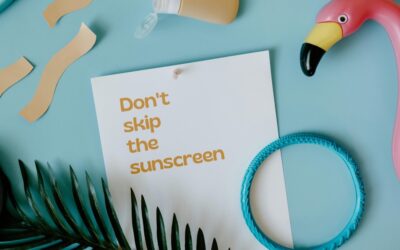What Is the UV Index?
The UV Index is a scale from 1 to 11+ that indicates the strength of ultraviolet (UV) radiation at a given time and location. It helps you understand when the sun’s rays are most harmful so you can take steps to protect your skin.
The higher the number, the stronger the UV radiation—and the greater the risk of skin damage, sunburn, and long-term problems like premature aging or skin cancer.
UV Index Levels and What They Mean
Understanding the UV Index helps you make smart decisions about sunscreen use and sun exposure:
UV Index 0–2: Low Risk
- Minimal danger from UV rays.
- Sunscreen isn’t typically needed unless you have very sensitive skin.
- Sunglasses and protective clothing are still a good idea.
UV Index 3–5: Moderate Risk
- UV radiation is strong enough to cause damage with extended exposure.
- Apply SPF 30+ sunscreen before heading outdoors.
- Add sunglasses, a hat, and seek shade during midday hours.
UV Index 6–7: High Risk
- UV rays are intense enough to cause burns in under 30 minutes.
- Wear SPF 30–50 sunscreen and reapply every two hours.
- Cover your skin with long sleeves and stay in the shade from 10 a.m. to 4 p.m.
UV Index 8–10: Very High Risk
- Skin damage can occur quickly—even in 15–20 minutes.
- Use SPF 50+ and full protective gear: wide-brimmed hat, sunglasses, UPF-rated clothing.
- Avoid being outdoors during peak sun hours if possible.
UV Index 11+: Extreme Risk
- Unprotected skin can burn in less than 10 minutes.
- Stay indoors or fully shielded when outdoors.
- Use maximum protection—SPF 50+, physical barriers, and complete sun avoidance during midday.
How to Use Sunscreen Based on the UV Index
No matter the UV Index, using sunscreen correctly is key to effectiveness. Follow these essential steps:
- Choose a broad-spectrum sunscreen that protects against both UVA and UVB rays.
- For UV index of 3 or higher, always apply sunscreen before going outdoors.
- Use at least SPF 30 for regular use; increase to SPF 50 or higher for high or extreme UV days.
- Apply sunscreen at least 15 minutes before exposure.
- Reapply every two hours, or sooner if you sweat, swim, or towel off.
- Use about 1 ounce (a shot glass amount) for full-body coverage, and 1 teaspoon for the face and neck.
Peak UV Hours and the Shadow Rule
UV radiation is strongest between 10 a.m. and 4 p.m. To reduce your risk:
- Plan outdoor activities for early morning or late afternoon.
- Use the “shadow rule”: if your shadow is shorter than you, the sun is at its strongest.
- Even in cooler temperatures, UV exposure can be high—don’t rely on heat as an indicator.
Why Cloudy Days Still Require Sunscreen
It’s a common myth that sunscreen isn’t necessary when it’s overcast. In reality:
- Up to 80% of UV rays can pass through clouds.
- Fog, wind, and cooler weather don’t block UV radiation.
- Always check the UV Index, not the sky, when deciding whether to wear sunscreen.
Sunscreen Guidelines by UV Index Level
| UV Index | Risk Level | Recommended SPF | Other Protection |
|---|---|---|---|
| 0–2 | Low | Optional SPF 15+ | Sunglasses, minimal shade if needed |
| 3–5 | Moderate | SPF 30+ | Hat, sunglasses, seek shade mid-day |
| 6–7 | High | SPF 30–50 | Long sleeves, shade, reapply often |
| 8–10 | Very High | SPF 50+ | Full protection, avoid mid-day sun |
| 11+ | Extreme | SPF 50+ (mineral best) | Stay indoors or completely covered |
Special Considerations
Children and Babies
- Babies under 6 months should not be exposed to direct sun and should wear protective clothing instead of sunscreen.
- For children older than 6 months, use SPF 30+ and reapply regularly.
- Choose mineral-based sunscreens for sensitive skin.
Sensitive Skin or Medical Conditions
- Those with fair skin, freckles, or a history of skin issues should opt for SPF 50+.
- People on medications that increase sun sensitivity should use extra caution.
Why Daily Sunscreen Is Essential
Even on days when the UV Index is low, daily use of sunscreen builds a strong habit that protects your skin over time. Sun damage is cumulative—it adds up gradually and shows its effects later in life.
Here’s why sunscreen should be part of your everyday routine:
- UV rays penetrate windows, so even indoor light exposure can affect your skin.
- Skin aging and wrinkles are primarily caused by UVA exposure over time.
- The best way to prevent skin cancer is consistent protection—every day, year-round.
Tips for Staying Sun-Safe All Year
Check the UV Index every morning. It’s available on weather apps and websites.
- Wear sunscreen even in winter. Snow reflects sunlight and increases UV exposure.
- Don’t skip sunscreen in the car. UVA rays penetrate glass.
- Reapply sunscreen. It’s more important than SPF number alone.
- Use sun-protective clothing: long sleeves, wide-brimmed hats, and sunglasses.
Final Thoughts
The UV Index is a powerful tool that tells you when and how to protect yourself from harmful UV rays. As a rule of thumb:
- Always wear sunscreen when UV Index is 3 or higher.
- Use SPF 30 or higher for everyday exposure, SPF 50+ for high-risk days.
- Reapply regularly and don’t forget the tips of your ears, neck, and hands.
By understanding the UV Index and using it to guide your sun protection strategy, you can prevent sunburn, reduce premature aging, and lower your risk of skin cancer.
You Might Also Be Interested In:
If you’re serious about sun protection, you may also be interested in reading these related guides:
How Much SPF Do You Really Need? Expert Sunscreen Guide
Disclaimer:
This article is for informational purposes only and is not a substitute for professional medical advice, diagnosis, or treatment. Always consult with a dermatologist or healthcare provider for personalized skincare recommendations.





0 Comments